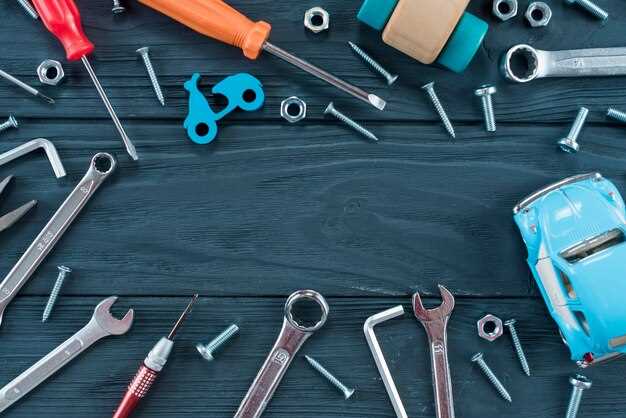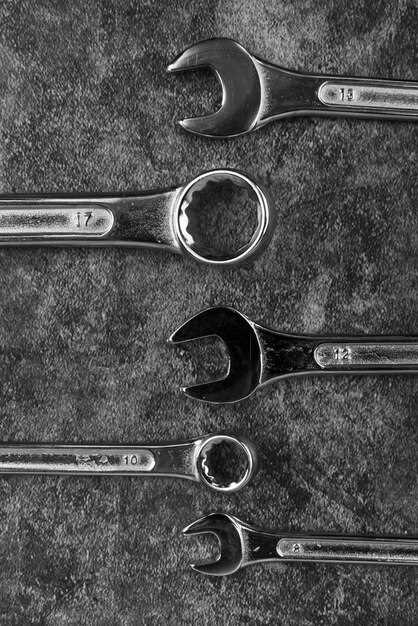
Maintaining your vehicle can be a rewarding and cost-effective endeavor, especially when you have the right tools at your disposal. Many car owners are discovering the benefits of taking maintenance into their own hands, from changing oil to replacing brake pads. However, to successfully perform these tasks, you’ll need to equip yourself with essential tools that simplify the process and enhance your efficiency.
In this article, we will explore the ten indispensable tools that every DIY car enthusiast should have in their toolkit. These tools not only facilitate common maintenance tasks but also empower you to tackle a range of repairs with confidence. Whether you’re a seasoned mechanic or a beginner, understanding the purpose and functionality of each tool will aid you in making informed choices as you maintain your vehicle.
From diagnostic scanners that help identify issues to basic hand tools that make repairs easier, the right equipment can drastically improve your car maintenance experience. Let’s dive into the specifics of these ten tools and discover how they can contribute to keeping your vehicle in optimal condition.
Socket Set: Essential for Quick Repairs
A socket set is an indispensable tool for anyone performing DIY car maintenance. It provides a versatile solution for various tasks, ranging from loosening bolts to performing component replacements. Socket sets come in various sizes and styles, enabling you to tackle both standard and metric fasteners, which are frequently found in modern vehicles.
One of the primary benefits of a socket set is the ability to switch between sockets quickly. This efficiency is especially valuable during repairs that require multiple sizes of fasteners. Instead of rummaging through a toolbox for the correct size wrench, you can easily switch sockets on your ratchet handle, saving time and effort.
Having a complete set ensures that you have the right tool for the job, thereby reducing the risk of damaging nuts or bolts. Using a socket instead of a wrench minimizes the chances of slippage, providing a secure grip that can handle higher torque levels. This is crucial when dealing with rusted or over-torqued fasteners commonly found in vehicles.
Furthermore, a quality socket set typically includes various extensions and adapters, allowing you to reach tight or awkward spaces in the engine bay. Whether you’re working on your car’s exhaust system or replacing the alternator, these tools can make all the difference in accessibility and ease of repair.
Investing in a comprehensive socket set is also economically wise, as it can eliminate the need for multiple separate tools. You’ll save both money and space in your garage while gaining a tool that enhances your overall automotive repair skills. For quick repairs and efficient maintenance, a socket set is truly essential.
Torque Wrench: Ensuring Proper Tightening

A torque wrench is an essential tool for any DIY car maintenance enthusiast. It allows you to apply a specific amount of torque to fasteners, which is crucial for the safety and performance of your vehicle. Proper tightening ensures that components are securely fastened without being over-tightened, which can lead to damage or failure.
Here are the key reasons why a torque wrench is indispensable:
- Precision: Torque wrenches provide accurate measurements, ensuring that bolts and nuts are tightened to the manufacturer’s specifications.
- Prevention of Damage: Over-tightening can strip threads or damage components, leading to costly repairs. A torque wrench helps avoid these issues.
- Consistency: Using a torque wrench for each maintenance task ensures that every fastener is tightened uniformly, which is vital for parts like wheels and cylinder heads.
- Safety: Properly torqued fasteners contribute to the overall safety of the vehicle. Loose or improperly tightened components can lead to mechanical failures and accidents.
When using a torque wrench, consider the following best practices:
- Read the Manual: Always refer to your vehicle’s service manual for the correct torque specifications for each component.
- Calibration: Ensure your torque wrench is calibrated correctly. Regularly check its accuracy to maintain reliability.
- Proper Use: When tightening, apply force smoothly and steadily until the wrench clicks or indicates that the set torque has been reached.
- Store Carefully: Store your torque wrench in a protective case to prevent damage. Avoid using it as a breaker bar, as this can affect its accuracy.
In conclusion, a torque wrench is crucial for anyone performing DIY car maintenance. Its ability to ensure proper tightening not only enhances vehicle performance but also promotes safety and longevity of the components. Investing in a quality torque wrench is a wise decision for any car owner looking to maintain their vehicle effectively.
Multimeter: Diagnosing Electrical Issues
A multimeter is an essential tool for any DIY mechanic, enabling accurate measurements of voltage, current, and resistance in electrical systems. This versatility makes it invaluable for diagnosing electrical issues in vehicles, where electrical faults can lead to myriad problems. Using a multimeter, you can quickly pinpoint issues that may cause poor engine performance, faulty accessories, or complete electrical failures.
To effectively use a multimeter, familiarize yourself with its basic functions:
| Function | Description |
|---|---|
| Voltage Measurement | Measures the voltage drop across components to identify power supply issues. |
| Current Measurement | Measures the current flowing through a circuit, useful for detecting short circuits. |
| Resistance Measurement | Checks the resistance of wires and components, indicating potential faults or open circuits. |
| Diode Testing | Tests diodes to check their functionality, ensuring that electrical flows in the correct direction. |
When diagnosing an electrical issue, follow these steps:
- Identify the symptoms of the problem, such as dim lights or non-functioning accessories.
- Set the multimeter to the appropriate mode based on the measurement needed.
- Perform tests at various points in the circuit to locate discrepancies in voltage or current.
- Compare readings with the manufacturer’s specifications from the service manual.
- Replace any faulty components detected through measurement.
Regular use of a multimeter can help you maintain optimal electrical performance in your vehicle, ensuring a reliable and efficient driving experience. Consider integrating this tool into your DIY car maintenance toolkit.
Oil Filter Wrench: Easy Oil Changes
An oil filter wrench is an essential tool for any DIY car maintenance enthusiast. It simplifies the process of removing and installing oil filters, which is often a challenging task due to tight spaces and the filter’s grip. This tool is designed specifically for various filter sizes and shapes, ensuring a secure fit that prevents slippage during removal.
Using an oil filter wrench can save time and prevent damage to the filter or surrounding components. Traditional methods, such as using pliers or a rag, can lead to stripped threads or broken filters, which complicates oil changes and may require professional assistance. With an oil filter wrench, you can exert the necessary torque without the risk of damaging the filter.
There are various types of oil filter wrenches available, including cap-style, strap-style, and chain-style options. Cap-style wrenches fit over the top of the filter, providing a solid grip for easy turning. Strap and chain-style wrenches wrap around the filter, allowing you to apply even pressure while maintaining control. Selecting the right type depends on your specific needs and the size of your vehicle’s oil filter.
Investing in a quality oil filter wrench is not only practical but also cost-effective. Regular oil changes are crucial for the longevity and performance of your vehicle, and having the right tools makes this task much more manageable. By ensuring you have an oil filter wrench in your toolkit, you can perform maintenance tasks efficiently and confidently.
Car Jack and Stands: Safe Vehicle Lifting
A car jack is an essential tool for anyone performing DIY vehicle maintenance. It allows you to raise your vehicle safely off the ground, enabling access to the undercarriage for repairs or inspections. There are various types of jacks available, including hydraulic, mechanical, and bottle jacks. Hydraulic jacks are popular due to their ease of use and ability to lift heavy vehicles with minimal effort.
When using a car jack, safety must be the top priority. Always place the vehicle on a flat surface to prevent any slipping or rolling. Engage the parking brake and ensure that the vehicle is in gear (or in ‘Park’ for automatic transmissions) before lifting. Once the vehicle is raised, it is crucial to use jack stands for additional safety.
Jack stands provide support for the vehicle once it is lifted, significantly reducing the risk of accidental lowering. These stands should be positioned according to the vehicle’s manufacturer’s guidelines, usually at designated lift points. Never rely solely on a jack to hold a vehicle in place, as hydraulic systems can fail, leading to catastrophic accidents.
Investing in high-quality car jacks and stands is essential, as cheaper options may compromise safety. Look for jacks and stands with a high weight capacity, sturdy construction, and a stable base. Regularly inspect your lifting equipment for any signs of wear, such as cracks or rust, and replace them if necessary.
In conclusion, a car jack and stands are indispensable tools for DIY car maintenance. Proper usage and safety precautions can ensure that your vehicle remains secure while you work underneath it, allowing for efficient and safe maintenance practices.
Pliers and Wrenches: Versatile Hand Tools for Various Tasks
Pliers and wrenches are essential hand tools for anyone engaged in DIY car maintenance. Their versatility allows you to tackle a variety of tasks effectively and efficiently. Here is an overview of their key features and uses.
Pliers
- Types: Several types of pliers are beneficial for car maintenance, including slip-joint pliers, needle-nose pliers, and locking pliers. Each type serves different functions.
- Grip: Pliers provide a strong grip on nuts, bolts, and other components, making it easier to turn or hold objects in tight spaces.
- Cuts and Grips: Wire cutters integrated into some plier designs allow you to cut through wires and cables easily.
- Adjustable Pliers: Slip-joint pliers are adjustable, providing flexibility for gripping various sizes of fasteners.
Wrenches
- Types: Common types include adjustable wrenches, socket wrenches, and combination wrenches. Each type is suited for different applications.
- Torque Application: Wrenches are perfect for applying torque to nuts and bolts, ensuring they are securely fastened.
- Socket Sets: A socket wrench set allows for quick changes between sizes, making it easier to work on multiple fasteners without changing tools.
- Compact Design: Wrenches can often fit into tighter spaces than other tools, which is especially useful when dealing with confined areas under the hood.
In summary, having a set of quality pliers and wrenches is crucial for efficient DIY car maintenance. Their ability to handle a variety of tasks makes them indispensable for both beginners and experienced enthusiasts.
